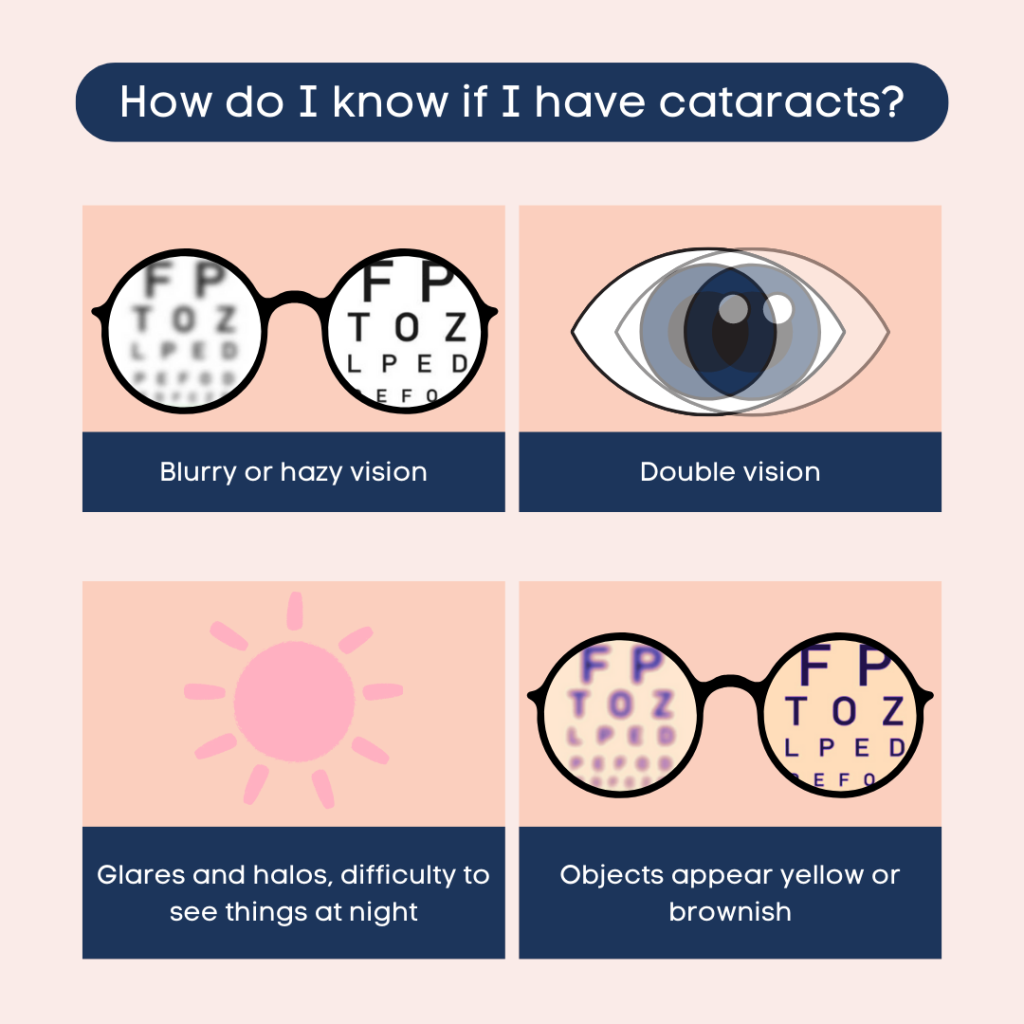Aging is a part of life, and age-related changes to our body are inevitable, including the changes to our eyes. As we hit 60 years old, vision loss will almost always become something we’ll have to live with for the rest of our lives. There are, however, ways to minimise its effects, and in some cases, make them disappear completely. Myopia, presbyopia, macular degeneration, and cataracts are some of the more common we’ll experience as we get older.
Myopia – Nearsightedness / Short-Sightedness
Myopia, also referred to as nearsightedness or short-sightedness, is the most common cause of impaired vision in people under age 40. People with myopia will find it difficult to see objects that are a couple of metres away, especially the smaller letters or symbols on signboards. It can start from as early as our childhood years, and it will only get worse as we age. You can minimise its effects by getting eyeglasses and/or contact lenses. Using these will require an eye power re-check from time to time. This is to ensure your glasses or lens match your eye power. This is exactly why some people opt for Epi-LASIK or SafeSight TransPRK as they both correct myopia for good while also eliminating the need to spend on eyeglasses and contact lenses.
Presbyopia – Lao Hua Yan
Presbyopia (Lao Hua Yan, 老花眼) usually strikes at the age of 40. It happens when the lens inside our eyes lose its ability of shape changing — which is what our eyes do in order to focus on objects. As a result, focusing on objects up close will be almost impossible. To compensate for this age-related vision loss, you will require either reading glasses, progressive lenses or multifocal contact lenses. If you’re looking at a long term, one-off solution, consider going for a presbyopia correction procedure.


Age-Related Macular Degeneration (AMD)
Another age-related change to our eyes is macular degeneration. Also called AMD (age-related macular degeneration), macular degeneration is the leading cause of blindness among those aged 60 and above. It happens when the macula (the small central portion of the retina) deteriorates. There are two types of age-related macular degeneration: dry form and wet form. These two forms of AMD have common symptoms – patients may suddenly develop blind spots and experience loss of central vision. Unlike myopia (Lao Hua Yan, 老花眼) and presbyopia, there is no cure for AMD, but there are ways to slow it down, such as anti-angiogenic drugs and laser therapy.
Cataracts
Perhaps the most-heard age-related eye disease, common to the point where they’re considered a normal & ageing vision change, is cataracts. Symptoms of cataracts include faded colours, double vision, and the most obvious one – seeing halos around light. This happens due to the clouding of the lens on your eyes. Cataracts could also lead to blindness and should therefore be treated quickly, if not immediately, upon detection or diagnosis. The only way to treat cataracts is through cataract surgery.

If you are experiencing any of the above-mentioned symptoms or anything similar, please do not hesitate to contact us at 6733 5188 to make an appointment for a check-up. It is better to get things checked out earlier to avoid any complications. Alternatively, you may email us your questions to doctor@clearvision.com.sg and we will be more than glad to help you out.








